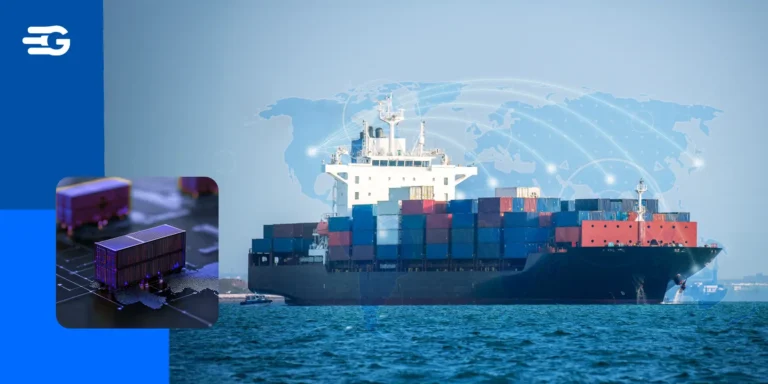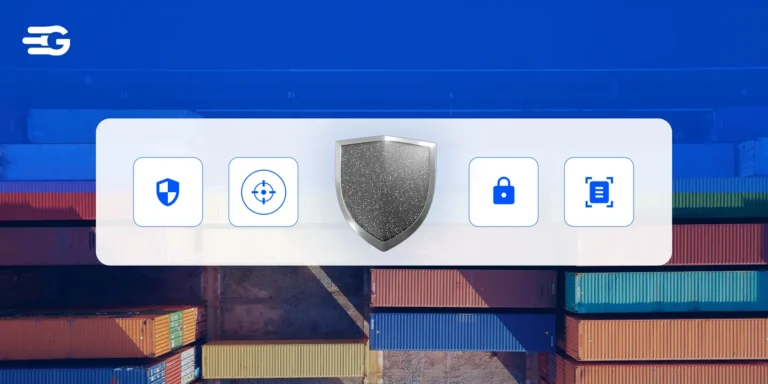Supply Chain Mapping: Definition, Benefits, Types, and More
Supply chain mapping is a powerful tool that many businesses overlook. Yet, it’s essential for keeping operations smooth, costs down, and customer satisfaction high. By clearly visualizing the movement of goods and information from suppliers to customers, supply chain mapping brings much-needed transparency.
Here’s everything you need to know about mapping your supply chain; its benefits, types of maps, steps for creating one, common challenges, and the impact it can have on your business’s success.
What Is Supply Chain Mapping?
Supply chain mapping visualizes the flow of products from start to finish. It shows how materials move through various stages. These stages include sourcing, manufacturing, distribution, and delivery. Mapping the supply chain provides a clear picture of each process involved.
Think of it as a road map. Just as a map helps you navigate unfamiliar territory, supply chain mapping provides businesses with a clear view of their operations. It enables organizations to track product movement at every stage, from sourcing to final delivery, helping identify inefficiencies, mitigate risks, and improve overall supply chain performance. This visibility can highlight potential issues before they become major problems, ensuring smoother operations. To understand the fundamentals of supply chains and their role in business, check out this well explained supply chain guide.
Why Supply Chain Mapping Is Important?
For businesses handling large shipments, supply chain mapping is a vital tool to stay competitive. It offers a clear understanding of how goods and information flow from suppliers to customers. Without this visibility, inefficiencies and risks can go unnoticed, leading to delays, higher costs, and dissatisfied clients.
Mapping allows businesses to address common challenges such as late shipments, stock imbalances, and unexpected disruptions. By identifying weak points and opportunities for improvement, companies can streamline their operations, reduce risks, and enhance customer satisfaction.
For enterprises relying on freight forwarders, supply chain mapping provides the transparency needed to monitor shipments in real-time and ensure smooth delivery. It’s not just about efficiency; it’s about staying ahead in a competitive market.
5 Benefits of Mapping Supply Chain
Mapping your supply chain is more than just a visualization exercise; it’s a game-changer for businesses managing large shipments. Here’s how it can make a tangible impact:
1. Improved Visibility
Supply chain mapping gives a clear view of every step in your operations. It shows where materials and products are at any given moment, allowing you to spot bottlenecks or delays quickly. With better visibility, businesses can make informed decisions to keep shipments on track.
2. Better Risk Management
Every supply chain has risks, but mapping helps you identify and address them proactively. Whether it’s a supplier issue, transportation delay, or geopolitical challenge, understanding these risks enables businesses to prepare and adapt. This reduces disruptions and ensures smoother operations.
3. Enhanced Efficiency
Mapping helps pinpoint inefficiencies, redundancies, and unnecessary steps. By streamlining these processes, businesses can save time and cut costs. Improved efficiency means faster deliveries, better use of resources, and happier customers.
4. Tracking Sustainability Goals
Businesses today need to track their environmental impact. Mapping supply chain operations can reveal areas for improvement, such as reducing carbon emissions or waste. This not only supports sustainability efforts but also appeals to eco-conscious customers and partners.
5. Cost Savings
By optimizing routes, identifying alternative suppliers, and minimizing delays, mapping helps reduce transportation and operational costs. These savings directly benefit your bottom line while improving overall supply chain performance.
Mapping supply chain processes provides the insights needed to operate smarter, reduce risks, and build a competitive edge. It’s a must-have tool for businesses managing complex supply chains.
Also Read: A Deep Dive into Supply Chain Planning: Definition and Process
Types of Supply Chain Maps
There are several types of supply chain maps. Each serves a specific purpose. Understanding these types can help businesses choose the right one for their needs.
Geographical Maps
Geographical maps display the physical locations of suppliers and production sites. They show how far materials travel to reach the end customer. These maps are essential for companies with global operations. They help visualize logistical challenges and transportation costs.
Process Maps
Process maps focus on the steps in the supply chain. They outline each phase, from procurement to delivery. This type of map helps businesses identify inefficiencies in specific processes. By visualizing these steps, organizations can improve their workflows.
Flow Diagrams
Flow diagrams illustrate the movement of goods and information. They show how products move between different points in the supply chain. These diagrams can help identify delays or unnecessary steps in the process.
Risk Maps
Risk maps highlight areas of potential vulnerability. They can show suppliers located in regions prone to natural disasters or political instability. By identifying these risks, businesses can develop strategies to mitigate them.
How to Map Your Supply Chain
Creating an effective supply chain map involves several steps. Each step is crucial for building a clear and accurate representation of your supply chain.
Step 1: Identify All Stakeholders
The first step is identifying all stakeholders. This includes suppliers, manufacturers, distributors, and customers. Understanding who is involved will help you map the entire supply chain accurately.
Step 2: Gather Key Data
Next, gather key data. Collect information about locations, timelines, costs, and processes. This data will serve as the foundation for your map. Make sure the data is reliable and up-to-date.
Step 3: Choose Mapping Tools
Choosing the right mapping tools is essential. Various software options are available, each offering different features. Look for tools that provide real-time data and allow for easy updates.
Step 4: Build and Visualize the Map
Once you have the data, start building the map. Use clear visuals to represent each step in the supply chain. Make sure the map is easy to understand. A cluttered map can confuse rather than clarify.
Step 5: Analyze and Update
Finally, regularly analyze and update the map. The supply chain is constantly changing. New suppliers may come on board, or processes may shift. Keeping your map current ensures you always have an accurate view. Learn more benefits of supply chain analysis.
Common Challenges in Supply Chain Mapping
Despite its benefits, supply chain mapping can present challenges. Recognizing these challenges can help organizations prepare for them.
Data Collection
One common challenge is data collection. Accessing reliable, up-to-date information can be difficult. Companies often struggle with outdated systems or fragmented data sources. This can lead to gaps in the mapping process.
Complexity
The complexity of supply chains is another challenge. Many businesses operate with numerous suppliers and partners. This complexity can make mapping feel overwhelming. However, breaking it down into manageable parts can simplify the process.
Global Risks
Global risks can complicate supply chain mapping as well. Geopolitical tensions, natural disasters, and economic fluctuations can disrupt operations. Being aware of these risks is vital for creating a resilient supply chain map.
Real-World Impact: How Mapping Transforms Supply Chains
Supply chain mapping can lead to significant real-world impacts. Many companies have experienced positive transformations after implementing mapping strategies. Here are some case studies reflecting on the same:
Case Study 1: Streamlining Inventory Replenishment for a Retail Enterprise
Challenge:
A prominent retail company faced challenges with delayed shipments and uneven stock levels across its distribution centers. Poor coordination between suppliers, warehouses, and stores resulted in frequent stockouts at high-demand locations while surplus inventory accumulated at others. This inefficiency increased storage costs and delivery delays, directly impacting customer satisfaction.
Solution:
The company employed supply chain mapping to analyze its logistics network, including supplier locations, shipment schedules, and warehouse operations. This process revealed key bottlenecks, such as delays at specific supplier hubs and inefficient transportation routes. By restructuring shipment schedules and implementing dynamic routing for deliveries, they achieved better alignment between supply and demand.
Results:
The mapping exercise reduced delivery times to stores by 20%, ensuring faster restocking of high-demand items. The company also optimized its shipment frequency, leading to a 15% decrease in transportation costs. As a result, customers experienced fewer stockouts, improving brand loyalty, while the company achieved greater efficiency in inventory turnover.
Key Takeaways:
- Supply chain mapping identifies inefficiencies in shipment schedules and logistics.
- Dynamic routing can significantly reduce delivery times and costs.
- Improved coordination between supply chain nodes enhances customer satisfaction and operational efficiency.
Case Study 2: Securing Temperature-Controlled Shipments for a Food Distributor
Challenge:
A large food distributor faced recurring issues with spoiled goods due to inconsistent temperature control during transit. Shipments of perishable goods often experienced temperature fluctuations at transfer points, leading to product spoilage and compliance failures with food safety standards.
Solution:
Through supply chain mapping, the distributor tracked the movement of goods across the entire cold chain, from supplier warehouses to retail outlets. This analysis highlighted critical transfer points, such as loading docks and cross-docking facilities, where temperature inconsistencies occurred.
The company implemented IoT-enabled sensors in their shipments to monitor real-time temperature data and revamped their carrier selection to prioritize those with advanced refrigeration systems.
Results:
The distributor achieved a 30% reduction in spoilage rates, saving millions annually. Real-time temperature tracking allowed immediate corrective actions during transit, reducing waste and ensuring compliance with safety regulations. These improvements also enhanced client confidence, leading to new business opportunities in temperature-sensitive product lines.
Key Takeaways:
Improved logistics processes ensure compliance, reduce losses and build trust with clients.
Supply chain mapping identifies vulnerabilities in the movement of temperature-sensitive shipments.
IoT-enabled sensors provide actionable data to maintain product integrity during transit.
How to Choose the Right Supply Chain Mapping Software
Selecting the right tools is crucial for effective supply chain mapping. Here are some factors to consider when choosing mapping software:
Real-Time Data
Look for tools that provide real-time data. This feature allows businesses to react quickly to changes in the supply chain. Real-time updates can help avoid delays and inefficiencies.
User-Friendly Interface
A user-friendly interface is essential. The software should be easy to navigate and visually appealing. If a tool is difficult to use, it may lead to errors in mapping.
Customization Options
Customization options are also important. Different businesses have unique supply chain needs. A flexible tool allows organizations to tailor their maps to suit their specific processes.
Integration Capabilities
Consider tools that integrate well with existing systems. Compatibility with other software can streamline data collection and enhance overall efficiency.
Key Takeaways
- Boosts Visibility: Supply chain mapping provides a clear view of each step in the chain, helping you track and manage processes seamlessly.
- Mitigates Risks: By identifying weak points or potential disruptions early, mapping allows businesses to prepare and adapt, keeping operations smooth.
- Drives Efficiency: Mapping highlights inefficiencies, enabling organizations to streamline processes, reduce costs, and improve resource allocation.
- Supports Sustainability: Visualizing the supply chain can reveal areas for eco-friendly improvements, helping businesses reduce their environmental impact.
- Various Map Types for Different Needs: Choose from geographical, process, flow, or risk maps, each tailored to specific business goals.
- Step-by-Step Mapping Process: Start by identifying stakeholders, gathering accurate data, and regularly updating your map for the best results.
- Real-World Impact: Companies using supply chain mapping see faster delivery, improved inventory management, and a competitive edge.
- Right Tools Matter: Selecting the right mapping tools is key, with options that offer real-time data, customization, and integration capabilities.
FAQs
What is the primary purpose of supply chain mapping?
The primary purpose of supply chain mapping is to visualize the flow of products and information through the supply chain. This visualization helps businesses identify inefficiencies, mitigate risks, and enhance overall performance.
How often should a supply chain map be updated?
A supply chain map should be updated regularly. Changes in suppliers, processes, and market conditions can affect the supply chain. Frequent updates ensure the map remains accurate and relevant.
What industries benefit most from supply chain mapping?
Various industries can benefit from supply chain mapping, including manufacturing, retail, and logistics. Any business that relies on a supply chain can gain value from understanding its flow and identifying potential issues.
Can supply chain mapping help with sustainability?
Yes, supply chain mapping can aid in sustainability efforts. By visualizing the supply chain, businesses can identify areas for improvement, reduce waste, and monitor environmental impacts.
What tools are best for supply chain mapping?
The best tools for supply chain mapping depend on specific business needs. Look for software that offers real-time data, user-friendly interfaces, customization options, and integration capabilities. Popular tools include Lucidchart, Visio, and specialized supply chain software.






